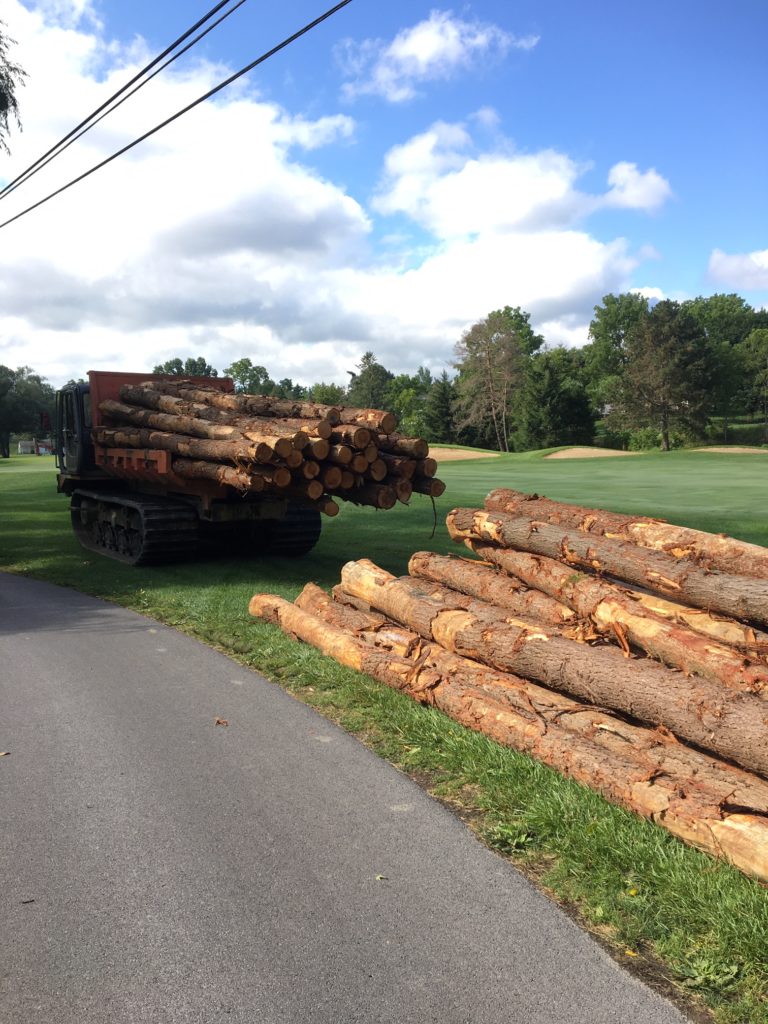Slab Cabin Run at Centre Hills Country Club prior to a restoration project that began on Aug. 3, 2021. Photo courtesy of ClearWater Conservancy
Through a partnership among local organizations and fundraising by club members, work began this week on the first phase of stream restoration for a portion of Slab Cabin Run at Centre Hills Country Club.
The project will improve water quality and wildlife habitat in and around the 3,200-square-feet of Slab Cabin Run that flows through the golf course, eventually making its was into Spring Creek and finally the Chesapeake Bay.
After Çentre Hills Director of Grounds Steve Craig began to assess the stream’s eroding banks in 2019, the club’s leadership and members worked with ClearWater Conservancy and Trout Unlimited to plan a strategy for restoration. Then-club President Damian Mochan and fly-fishing legend Joe Humphreys presented a plan to members soon after, and while fundraising slowed in 2020 because of the COVID-19 pandemic, the goal has since been reached.
“This wouldn’t have been possible without the generous support of our members, especially Bob Campbell who was the driving force behind the fundraising” Mochan said in a statement. “This project has something for everyone to support. It’s estimated that we will eliminate approximately 7.4 tons of sediment every year. We will have over two acres of riparian plantings and we will improve the habitat diversity of the stream.”
The first phase, taking place through Saturday, will stabilize the stream bank and add fish habitat structures at key locations. Made of hemlock logs and limestone rock, the structures are designed to increase fish habitat and prevent stream erosion.
“Some structures will provide overhead cover for the trout, while others will narrow down wider sections and create deeper runs and riffles while providing some pocket water,” Phil Thomas, stream restoration specialist for Trout Unlimited, said.
In the fall, ClearWater Conservancy and Native Creations Landscape Services will begin the second phase, which will establish a riparian buffer by planting native trees and shrubs along the bank to improve water quality, provide a shade and protect the stream.
“This restoration project offers a great example of how multiple partners come together to help landowners and protect streams and wildlife throughout our community,” Colleen DeLong, ClearWater Conservancy’s habitat stewardship biologist, said. “This project is just downstream from the Meyer Dairy property, where stream restoration efforts that began four years ago are already improving streamside habitat in the region.”
In 2017, ClearWater Conservancy acquired a conservation easement for the Meyer Dairy and Everhart farms in Harris and College townships. The largest project in the conservancy’s history, the initiative aims to protect source water, restore Slab Cabin Run and preserve the Meyer and Everhart lands.
Last month, the Pennsylvania Department of Environmental Protection upgraded the classified existing use for 10 Centre County streams. Slab Cabin Run was upgraded from a Cold Water Fishery to a High Quality Cold Water Fishery, indicating the stream’s health has improved from previous years and will receive additional protections.
Other recently upgraded streams that ClearWater Conservancy has worked to restore include Roaring Run and a tributary of Penns Creek.
“Restoration of Slab Cabin Run has long been a priority for our community and we’re proud to partner with Centre Hills Country Club and Trout Unlimited who are making great strides in water quality improvement,” Deb Nardone, executive director of ClearWater Conservancy, said. “These ongoing efforts prove that one project and one acre at a time we can make a positive impact on the overall health of our region for both people and wildlife.”

Credit: Source link
































